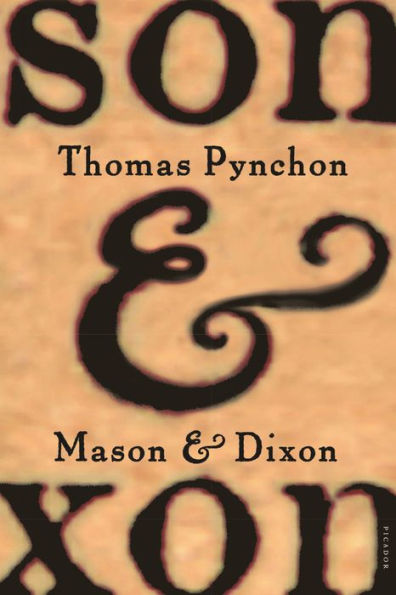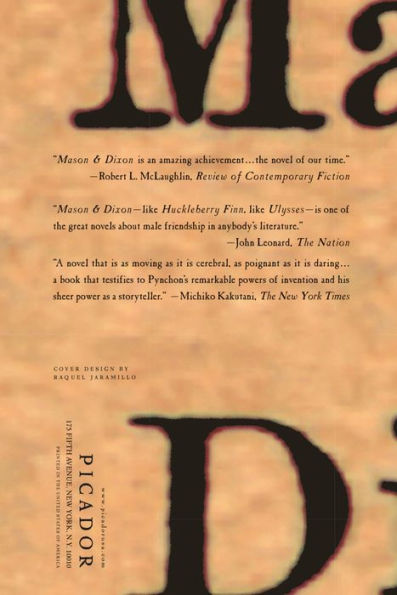Charles Mason (1728-1786) and Jeremiah Dixon (1733-1779) were the British surveyors best remembered for running the boundary between Pennsylvania and Maryland that we know today as the Mason-Dixon Line. Here is their story as re-imagined by Thomas Pynchon, featuring Native Americans and frontier folk, ripped bodices, naval warfare, conspiracies erotic and political, and major caffeine abuse. We follow the mismatched pair—one rollicking, the other depressive; one Gothic, the other pre-Romantic—from their first journey together to the Cape of Good Hope, to pre-Revolutionary America and back, through the strange yet redemptive turns of fortune in their later lives, on a grand tour of the Enlightenment's dark hemisphere, as they observe and participate in the many opportunities for insanity presented them by the Age of Reason.
Charles Mason (1728-1786) and Jeremiah Dixon (1733-1779) were the British surveyors best remembered for running the boundary between Pennsylvania and Maryland that we know today as the Mason-Dixon Line. Here is their story as re-imagined by Thomas Pynchon, featuring Native Americans and frontier folk, ripped bodices, naval warfare, conspiracies erotic and political, and major caffeine abuse. We follow the mismatched pair—one rollicking, the other depressive; one Gothic, the other pre-Romantic—from their first journey together to the Cape of Good Hope, to pre-Revolutionary America and back, through the strange yet redemptive turns of fortune in their later lives, on a grand tour of the Enlightenment's dark hemisphere, as they observe and participate in the many opportunities for insanity presented them by the Age of Reason.

Mason and Dixon
784
Mason and Dixon
784Paperback(First Edition)

Customer Reviews
Explore More Items
Winner of the 1973 National Book Award, Gravity's Rainbow is a postmodern epic, a work as exhaustively significant to the second half of the twentieth century as Joyce's Ulysses was
"The comedy crackles, the puns pop, the satire explodes."--New York Times
Thomas Pynchon's highly original, postmodernist classic, a satire of American life about a woman who finds herself enmeshed in
“Raunchy, funny, digressive, brilliant.” —USA
"Entertainment of a high order." - Time
Part noir, part psychedelic romp, all Thomas Pynchon—private eye Doc Sportello surfaces,
Early short stories by Thomas Pynchon, introduced by the author and praised as "an exhilarating spectacle of greatness discovering its powers" by the New Republic.
Thomas Pynchon's literary career
Acclaimed writer Thomas Pynchon's wild, macabre tale of the twentieth century and of two
The Washington Post
“Brilliantly written… a joy to read… Bleeding Edge is totally gonzo, totally wonderful. It really is good to have Thomas Pynchon around, doing what he does
National Bestseller
"A blend of breathtaking artistry, encyclopedic knowledge of the natural world. . . and ardent commitment to the supremacy of nature." -- San Francisco Chronicle
In this beautiful
In The Lacuna, her first novel in nine years, Barbara Kingsolver, the acclaimed New York Times bestselling author of The Poisonwood Bible and Animal, Vegetable, Miracle: A Year of Food Life,
From Barbara
All Felix Nasmyth and friends have to do is harvest a crop of
New York Times bestselling author T.C. Boyle speaks to a brand-new audience in this anthology of his classic, richly imagined short fiction about teenagers.
His many, varied novels are part of
Just off the coast of Southern California, two families—one in the 1880s and



